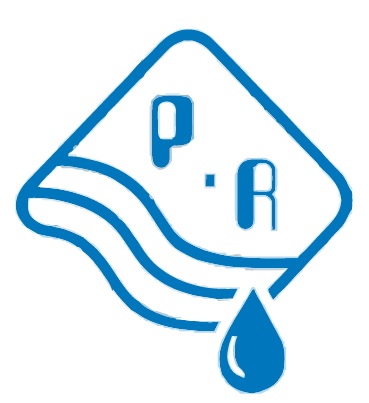Description
Fiberglass pipe
GRP fiberglass pipe or glass reinforced plastic pipe (GRP: Glass Reinforced Plastic) is a pipe made of composite materials that use a type of polymer matrix in its structure. This product is usually reinforced with glass fibers and the composite materials used in it are called fiberglass. Therefore, fiberglass pipe is a strong and light construction material that can be a suitable alternative to steel, wood or plastic. Of course, the type of reinforcing fibers is chosen in the production process of this product according to the needs of consumers.
Product introduction
Today, the use of GRP fiberglass pipe has created a great transformation in various industries. The advantages and capabilities of this product make it easy to adapt to different environmental conditions. The practical point about the fiberglass pipe is that some manufacturers can custom produce and export it according to the needs of customers. But why is the use of GRP pipes, especially for various industrial uses, so widespread? What criteria should we consider when buying this product? Stay with us to find out the answers to these questions and more information about the mentioned products. In the following we want:
- Let’s talk about the production processes and the most important advantages of GRP fiberglass pipe.
- Provide practical guidance for choosing and buying these products.
- Check the conditions of price, sale and export of fiberglass pipe.
- Answer some frequently asked questions about these products.
What is meant by GRP fiberglass pipe?
GRP pipe or glass reinforced plastic pipe (GRP: Glass Reinforced Plastic) is a pipe made of composite materials that use a type of polymer matrix in its structure. This product is usually reinforced with glass fibers and the composite materials used in it are called fiberglass. Therefore, fiberglass pipe is a strong and light construction material that can be a suitable alternative to steel, wood or plastic. Of course, the type of reinforcing fibers is chosen in the production process of this product according to the needs of consumers.
What are the most important types of GRP pipes?
Different types of GRP fiberglass pipes are selected according to the necessary properties for the environment used, including chemical and temperature resistance and mechanical properties. Based on this, we can consider this product family as consisting of the following main types:
- GRP: glass fiber reinforced plastic
- GRE: glass fiber reinforced epoxy
- GRV: glass fiber vinyl ester resin
- GROUP: Unsaturated polyester resin reinforced with glass fibers
Of course, fiberglass pipe reinforcement materials have a suitable combination of glass fibers along with a glass coating compatible with the resin system used in the composition of this product.
What are the most important advantages of GRP fiberglass pipe?
- High corrosion resistance: The inert nature of GRP pipe components makes the internal and external surface of this product more resistant to corrosion than cast iron and carbon steel. Fiberglass pipe is usually designed for a useful working life of 50-60 years, and this period is estimated even up to 100 years. With the help of resin barriers, this product can be resistant in corrosive environments, and for this, it does not need additional lining and external coating.
- Light weight: The weight of GRP fiberglass pipe is about 35% of the weight of carbon steel pipe and 10% of the weight of the similar concrete pipe. This feature makes it possible to reduce the costs of transportation, installation of sites, etc. to a great extent.
- Electrical insulation: Fiberglass pipe does not conduct electricity through itself, and as a result, it has much better electrical properties than steel pipe. Therefore, cathodic protection is not necessary for it. However, if electrical conductivity is required, we can add conductive fiber or reinforcing fillers during the manufacturing process.
- Dimensional stability: The fiberglass materials used in the GRP pipe meet the most stringent standards of hardness, dimensional tolerance and weight.
- Low maintenance cost: GRP fiberglass pipe piping system is easy to maintain; Because it does not rust, is easy to clean and requires minimal environmental protection.
- Adaptability: Due to its composite structure, GRP pipe can be designed exactly according to the needs of your projects; As a result, it leads to cost savings for various projects. This product can be produced with customized shape, color and texture.
- Liquid surge shock absorption: The fiberglass pipe is designed to absorb about 40% of the wave shock without the need to increase the degree of this variable in the product design.
- Minimal internal friction: The smooth internal surface of this product helps to minimize its internal friction and maintains this feature throughout its useful life.
What are the main uses of fiberglass pipe?
GRP pipe is widely used in the following factories:
- Chemical processes
- desalination
- Transporting industrial effluents
- Mining Industry
- Oil, gas and petrochemical industries
- Purification and transfer of potable water
- Power plant cooling and raw water
- Sea water inlet and outlet
- metal production
- Transferring industrial slurry
- Pulp and paper factories
- Sewage and drainage systems
- Transportation of oil, alcohol, fat and food industry solutions
Some other uses of this product are:
- GRP fiberglass pipe fences: These fences can be easily assembled in environments such as stairways, corridors, and ramps. It is safe to use this product in environments with chemicals and corrosive substances and it does not need to be painted.
- Jet fuel system: Some manufacturers manufacture and supply conductive fiberglass piping systems for transporting fluids such as jet fuel.
What criteria should we pay attention to when buying GRP pipes?
It is important to note that not all GRP pipes are the same and each has its own advantages and disadvantages. Therefore, when choosing this product, you should consider the technical conditions of the intended environment and the type of application according to the following criteria.
- Pressure: Pressure is always an important component for the design of systems such as water transmission. Water pressure is a mechanical force that affects the structural integrity of the fiberglass pipe. Therefore, check the flow pressure before choosing the product. By checking the nominal pressure, you can find out the maximum working pressure of the pipe, which is indicated by the PN (Pressure Nominal) number.
- Load: This criterion refers to the external load that we expect the GRP pipe to withstand. This criterion is important for underground installations, where the pipe must support a large weight of the soil. As a result, the greater the installation depth, the greater the load on the pipe.
- Stiffness: This criterion is actually determined by the pressure variable. Pipe stiffness represents its strength and is often defined as its resistance to deflection. In simple words, the more rigid the pipe, the thicker its wall will be. The thickness represents the ability of the GRP fiberglass pipe to withstand external and internal pressures. External pressures can be caused by bending or overload, and internal pressure is caused by internal flow in the pipe. The hardness of the pipe is indicated by SN number.
- Customization: Some manufacturers can provide you with different types of fiberglass pipe in terms of pressure and hardness. Customization can be related to the addition of glass reinforcements to the pipe structure or the type and arrangement of glass reinforcement to increase its mechanical strength.
- Budget considered: You should be careful to choose the most suitable product to fulfill your goals without paying extra. Choosing features beyond your requirements will only cost you more.
- Certification: It is important to always check the certifications and licenses of the GRP fiberglass pipe manufacturer. Technical and quality certificates show that appropriate and standard methods are followed during the manufacturing process, which is also very important in terms of product safety and health.
How is fiberglass pipe produced and what is its use based on it?
GRP pipe containing glass fibers is commonly used to make GRP pipes and tanks. Glass fibers are produced by melting mixtures of minerals based on silica glass at a temperature between 1300 and 1600 degrees Celsius. In this condition, the cross structure of silica is destroyed and its composition is changed by introducing other oxides. Reinforcements used to produce industrial products such as tanks, silos and pipes are made from three different glass compounds as follows:
- C glass, which has good chemical inertness against corrosive environments.
- E glass, which is not resistant to corrosion, but has a very high mechanical resistance.
- ECR glass, which is similar to E glass, but does not contain boron or fluorine. As a result, the GRP pipe containing this material has a high chemical resistance; Including: resistance to water, acid and alkaline substances. On the other hand, this material is more resistant to high temperature than E glass fibers.
- It has better dielectric strength.
- Its electrical leakage is less and its surface resistance is higher.
- GRP fiberglass pipe is a safety material for use in places that are constantly exposed to electricity, chemicals and corrosives or heavy weight loads. For this reason, these composites are used in bridges, buildings, industrial structures and protective profiles.
- The resin acts as the “glue” in the GRP pipe structure. The application of resin liner in the structure of this product creates the best resistance against different fluids. Unsaturated polyester resins used to make composite materials can be divided into Orthophthalic, isophthalic or terephthalic resins. The uses of these materials are as follows:
- Orthophthalic resins: They are multi-purpose resins for transferring water and wastewater. They use them to make laminates that must withstand strong chemical attacks or weathering. GRP fiberglass pipe made with these resins are used in medium to low temperatures. These materials should not be used to make the inner lining of these pipes.
- Isophthalic resins: the best application of these materials is for the construction of sewage, drinking water and sea pipes on the surface or underground. In fact, this material is more resistant to substances such as salts and mild oxidizing acids with moderate concentrations. This type of resin is always used for the inner lining of the pipe. Of course, vinyl ester resins have greater mechanical strength and resistance to chemicals and high temperatures than polyester resins; But their price is higher. Epoxy resins are also usually ideal for smaller diameters and higher pressures.
According to the type of application, what type of GRP pipe should we choose?
- For marine, industrial and oil and gas applications, fiberglass pipes with medium to high pressure and special technical specifications are mainly required. For such use, you should generally use pipes with continuous threads.
- For civil infrastructure projects (more than 1000 km) you will need longer pipelines, the type produced by Continuous Filament Winding (CFW) process is recommended.
- If you want GRP fiberglass pipe for low pressure, such as applications such as sewer pipes, you can choose a product that is produced by Centrifugal Casting.
What are the price and export conditions of GRP fiberglass pipe?
When we talk about the price of this product, we have to consider various conditions involved in it. Things like better quality in the sense of following certain engineering, design and control principles in production processes, raw materials and export affect the price of this product. generally, we can consider the price of fiberglass pipe to be dependent on the following:
- Product order volume
- Hardness and strength
- Diameter pipe
- gender
- Overhead costs, including transportation, etc.
Some frequently asked questions about fiberglass pipe
- Is GRP thermal insulation? This pipe can be insulated against heat by using special glass fibers along with plastic in the production process.
- Is fiberglass waterproof? GRP is waterproof and used in roofs, boats and other outdoor applications.
- Is the GRP tube resistant to ultraviolet rays (UV)? The material of this product has a high resistance to ultraviolet rays.
- Is GRP a thermoplastic material? No, GRP fiberglass pipe is manufactured using thermoset resin. It means that we can heat it and shape it only once. This feature helps the pipe not melt against high heat.
- Is this product flammable? Many of the chemicals used to produce GRP pipes are flammable. But we can make this product fire resistant by using different non-flammable resins.
Conclusion
The ratio of weight to strength of the GRP fiberglass pipe makes it highly resistant to corrosion; As a result, this product is widely used in harsh environments and especially unstable temperature conditions. Nowadays, the many advantages of fiberglass pipe have caused this product to gradually replace products such as steel or concrete pipes in applications such as firefighting and water and sewage services. GRP pipe is cost-effective to produce, and benefits such as long service life, lightness, and customization justify the investment of various industries to use it more. Of course, before choosing this product, you must consider its conditions of use.











